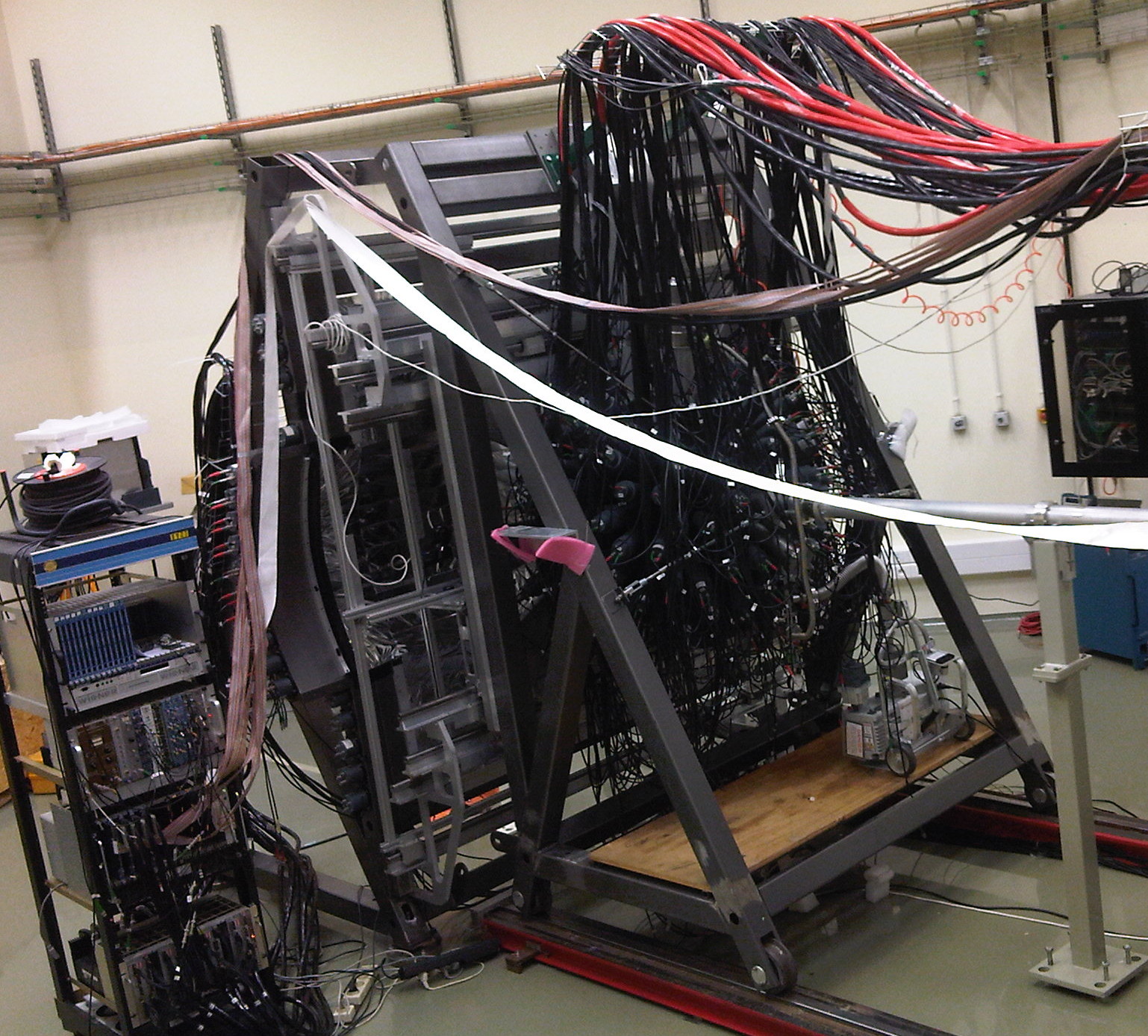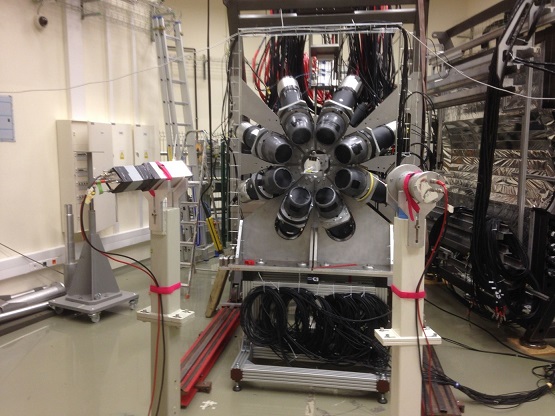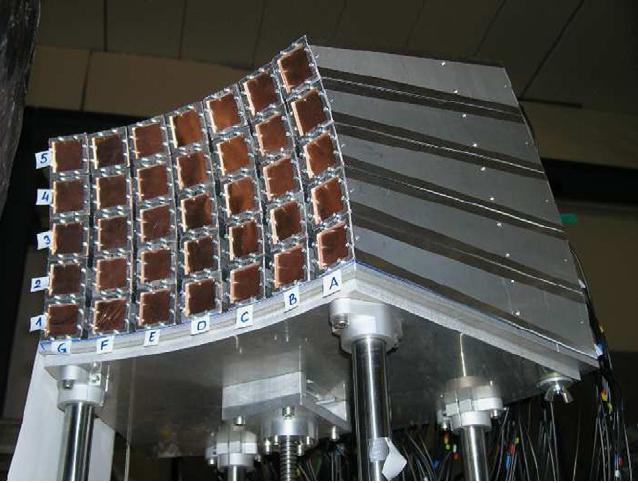Big Instrument for Nuclear reaction Analysis (BINA)
BINA is an almost 4pi detector system designed for exclusive measurement of elastic scattering and breakup reactions in different configurations of few nucleon systems. Initially built at KVI, Groningen, from 2013 it is actively used at CCB in Henyk Niewodniczański Institut of Nuclear Physics in Krakow. It consists of the forward part for precise reconstruction of charged particles momenta (in total around 450 read-out channels), and backward scintillator ball for registration of particles scattered at higher polar angles (149 channels). Forward part includes two scintillator hodoscopes for energy and energy loss measuremement, and Multi Wire Proportional Chamber for reconstruction of particles trajectories. Backward part is build of 149 phoswich scintilaror elements forming the detector and, at the same time, vacuum chamber, for cryogenic deuterium target.

High Energy gamma-ray deteCTOR (HECTOR)
HECTOR is an high-efficiency array to measure high-energy gamma rays in the energy range 2 - 40 MeV with relative full energy peak efficiency (at 15 MeV) of approx. 10 %. The array consists of 8 large volume BaF2 scintillators (145 mm diameter and 175 mm length). The energy resolution is ~12 % for low energy (Co-60) and ~10 % for high energy (15 MeV) gamma rays. Very good time resolution (< 1 ns) allows distinguishing between gamma rays and neutron induced events using time of flight method.Few clusters of the PARIS array and large volume LaBr3 detectors might in specific campaigns extend HECTOR.
The high-energy gamma-rays array can operate in coincidence with KRATTA system detecting scattered protons.

KRAkow Triple Telescope Array (KRATTA)
KRATTA, is a versatile, low threshold, broad energy range detector system, built to measure the energy, emission angle, and isotopic composition of light charged reaction products. It consists of 38 independent modules which can be arranged in an arbitrary configuration. A single module, covering actively about 4.5 msr of the solid angle at the optimal distance of 40 cm from the target, consists of three identical, 500 mm thick, large area photodiodes, used also for direct detection, and of two CsI(1500 ppm Tl) crystals of 2.5 and 12.5 cm length, respectively. All the signals are digitally processed. The lower identification threshold, due to the thickness of the first photodiode, has been reduced to about 2.5 MeV for protons (~ 65 um of Si equivalent) by applying a pulse shape analysis. The pulse shape analysis allowed also to decompose the complex signals from the middle photodiode into their ionization and scintillation components and to obtain a satisfactory isotopic resolution with a single readout channel. The upper energy limit for protons is about 260 MeV. For details please refer to J. Łukasik et al. Nuclear Instruments and Methods in Physics Research A 709 (2013) 120-128.

Other detectors
Other detection systems are considered:



